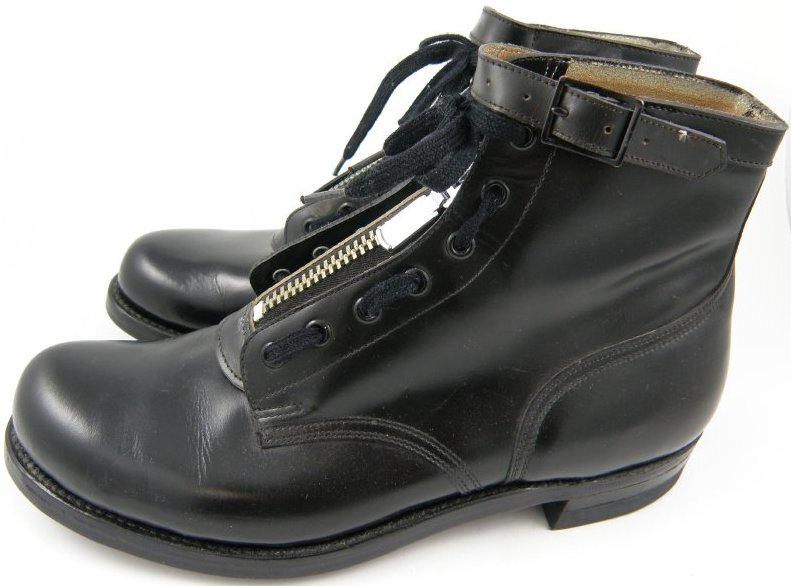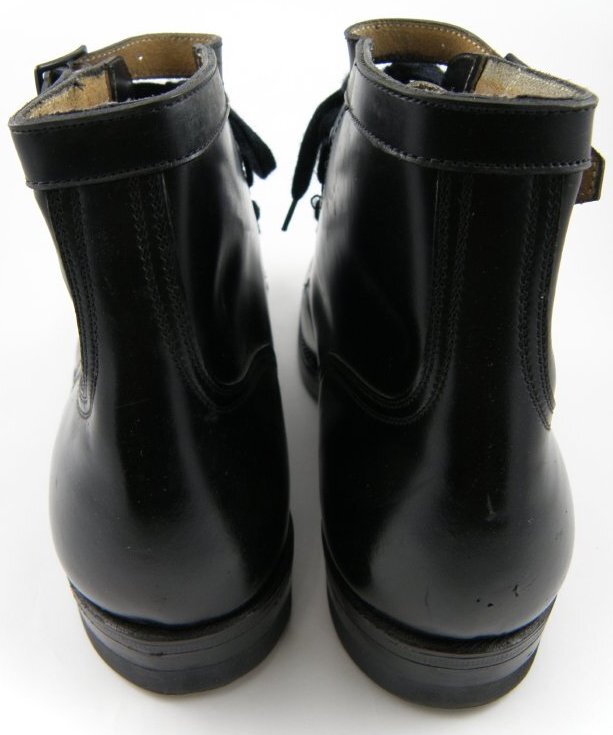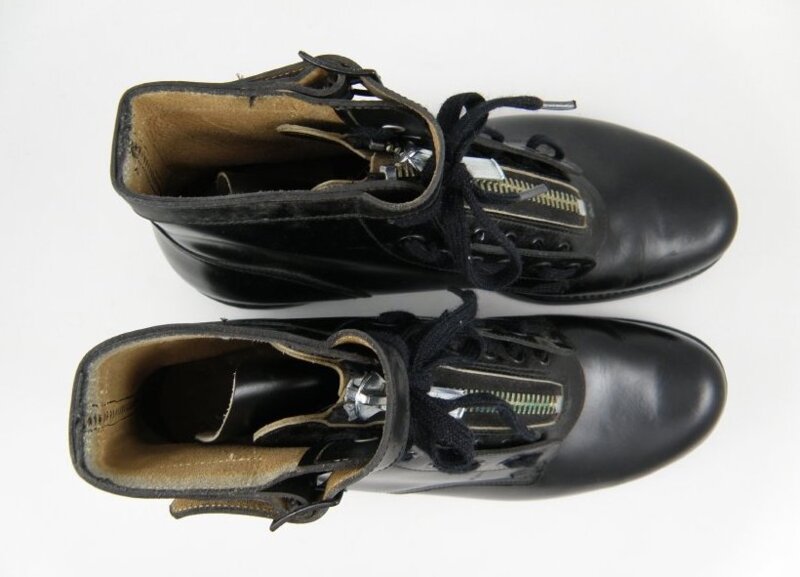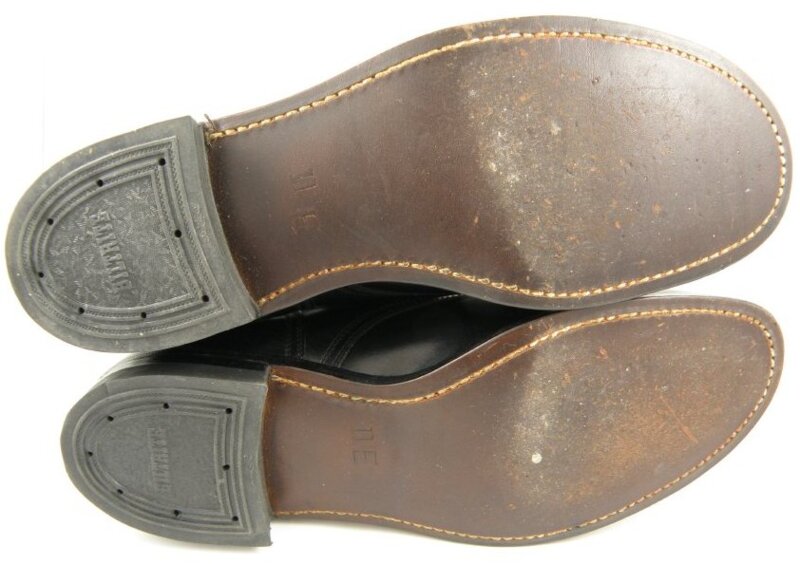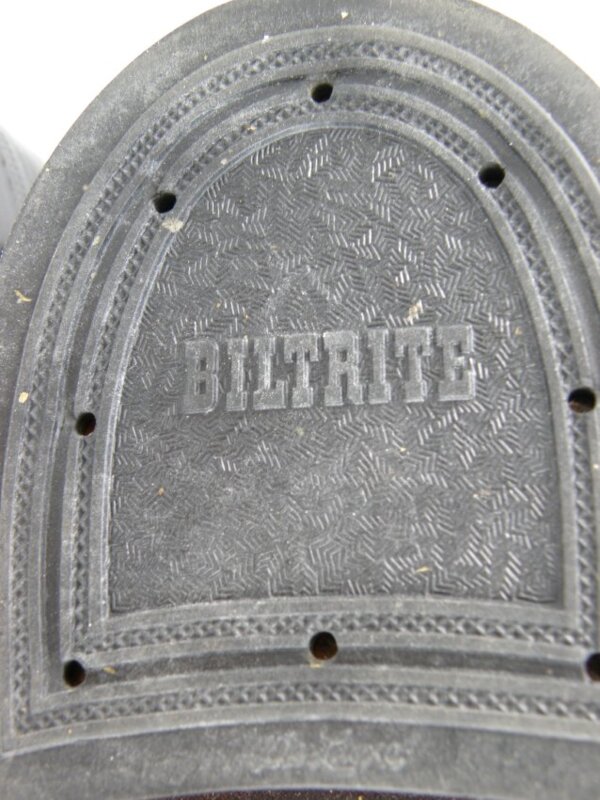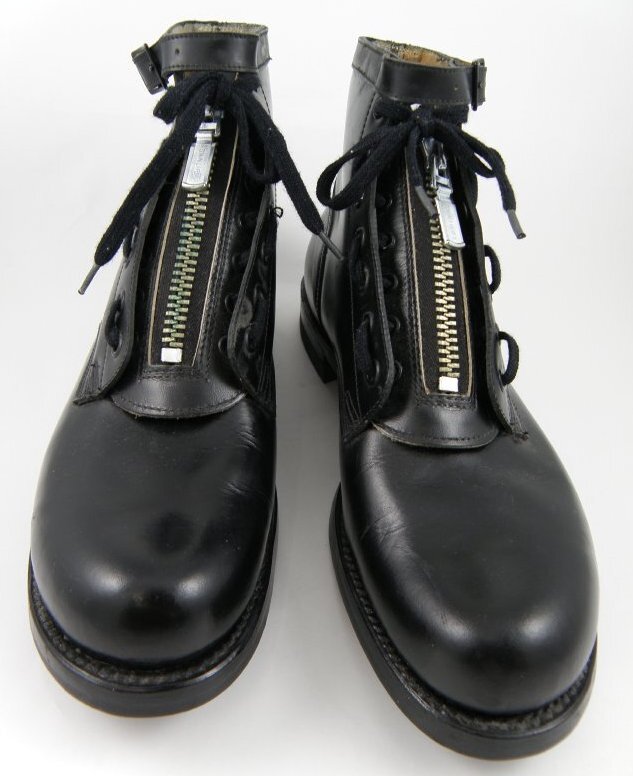Boots
Item
Title
Boots
Description
PAIR OF BLACK LEATHER FLYING BOOTS. Pair of black leather flying boots from Unification Era. The upper part of the boot has a leather strap and black painted metal buckle for securing the ankle. Seven pairs of black painted rivetted eyelets with black cotton laces along with a large metal lightning zipper form the front part of the boot. A black one inch rubber heel is attached to the heel using glue and small metal nails. Boots are size11E.
Identifier
004.017.002
Provenance
Canadian Unification Era The current incarnation of the Canadian Forces dates from 1 February 1968, when the Royal Canadian Navy, Canadian Army, and Royal Canadian Air Force were merged into a unified structure. Its roots, however, lie in colonial militia groups that served alongside garrisons of the French and British armies and navies; a structure that remained in place until the early 20th century. Thereafter, a distinctly Canadian army and navy was established, followed by an air force, that, because of the constitutional arrangements at the time, remained effectively under the control of the British government until Canada gained legislative independence from the United Kingdom in 1931, partly due to the performance and sacrifice of the Canadian Corps in the First World War.[9][10] The Canadian forces were then heavily involved in the Second World War (which, as with the previous world war, involved conscription) and Korean War, and, from the 1950s on, adopted more the role of a peacekeeping force within United Nations sanctioned conflicts. Generally considered to be 1973-1983. The obvious change was that the CAF titles of the Post-Unification era, had been shortened to "CANADA" (capitalised) and the bilingual roundel ident (ARMED FORCES -roundel- FORCES ARMEE), was introduced on both sides of the fuselage. During this time, aircraft started to acquire low-visibility markings. The first version of 'low-viz' markings was basically reduced-sized, full-colour markings, with the white removed, allowing the underlying camouflage colour to be visible. The next step was the all-black national markings. Once the aircraft started going 'Grey', the markings began appearing as a contrasting shade of grey. FIP: The Canadian government adopted this scheme as part of their corporate "Federal Identity Progam" plan, June 1983. Begun in 1970, all gov't departments adopted a common marking policy for their equipment. The obvious changes included "CANADA" being replaced with "Canada" and a small Canadian flag appearing over the last "a", sometimes referred to as 'Canada Wordmark'. The fuselage roundel ident was also dropped and the roundel once again stood alone. The bilingual fuselage ident was now relaced by the 'Armed Forces signature' - a two-tier, bilingual title (CANADIAN FORCES/FORCES CANADIENNE), fronted by a partial or full Canadian flag. Like the ident, this appeared on the fuselage. One final note to the sometimes confusing world of CAF markings. During the change over in the 'era type' markings, it wasn't uncommon to observe aircraft, in the 'old scheme', for some time after the 'newer scheme' had taken effect.
Abstract
Excellent
Date Created
1968

